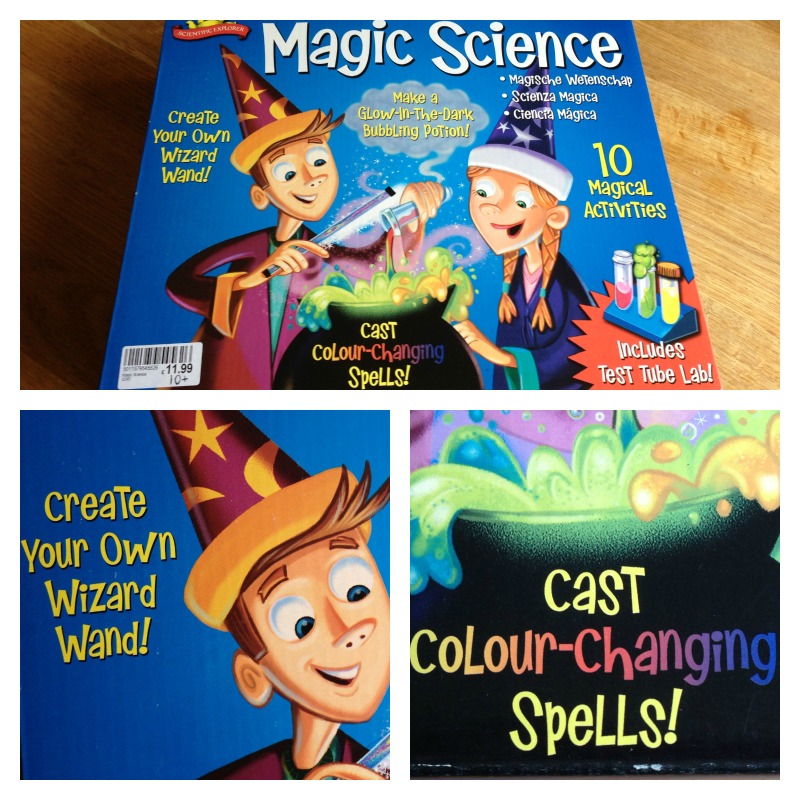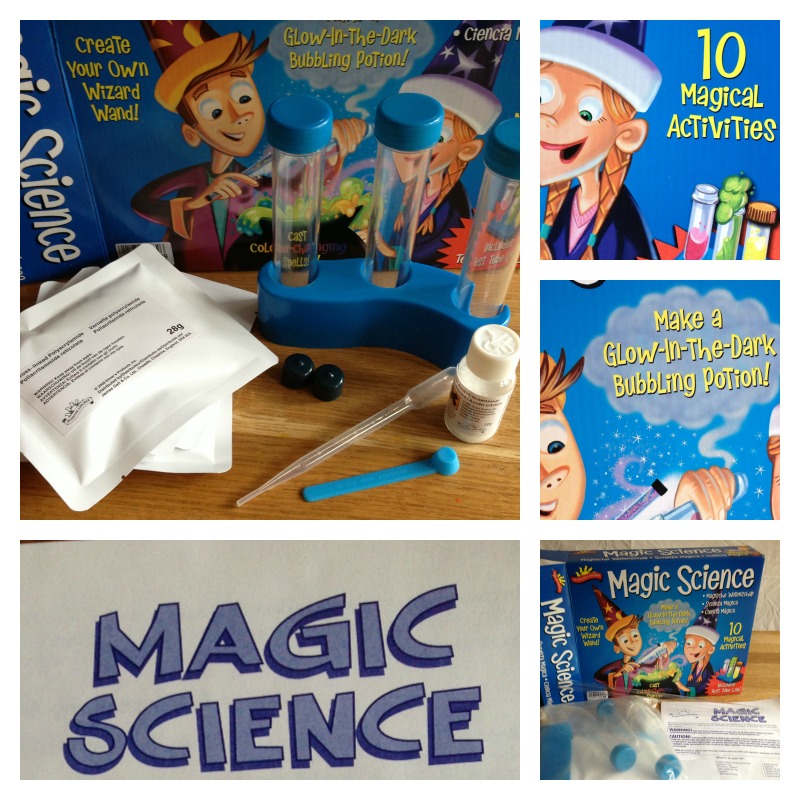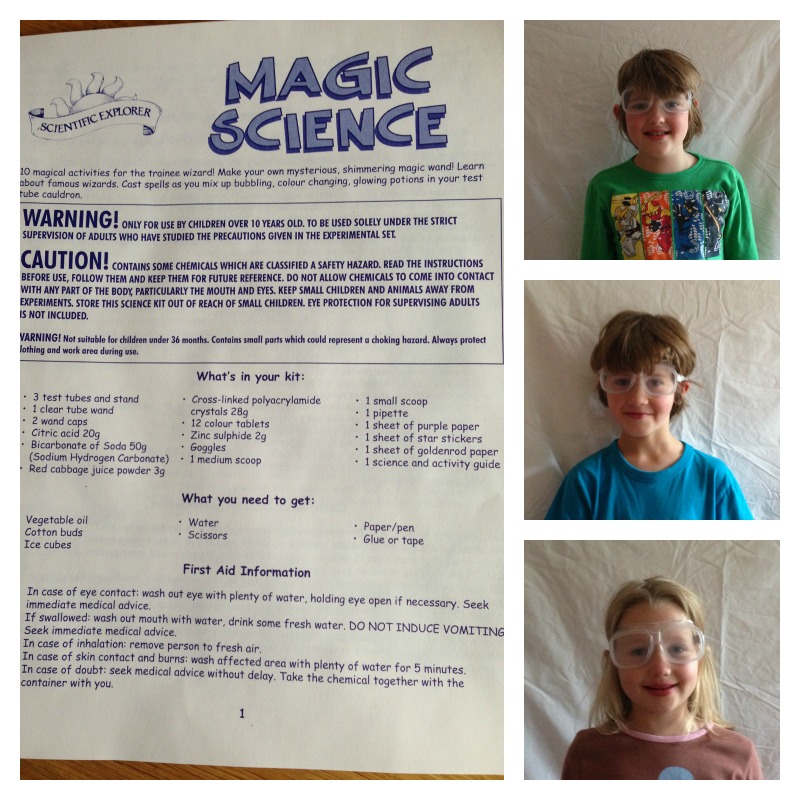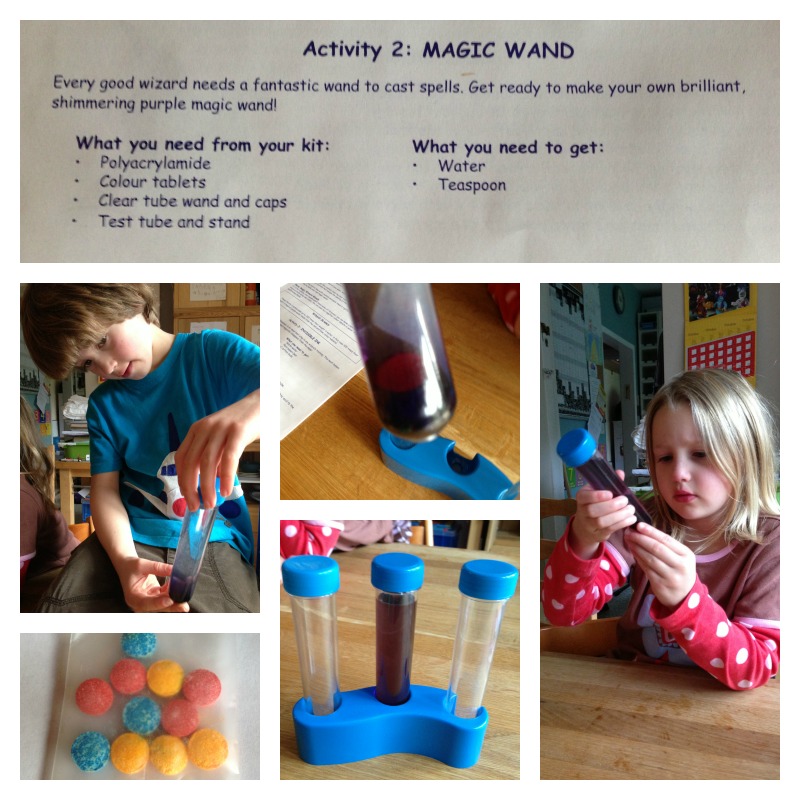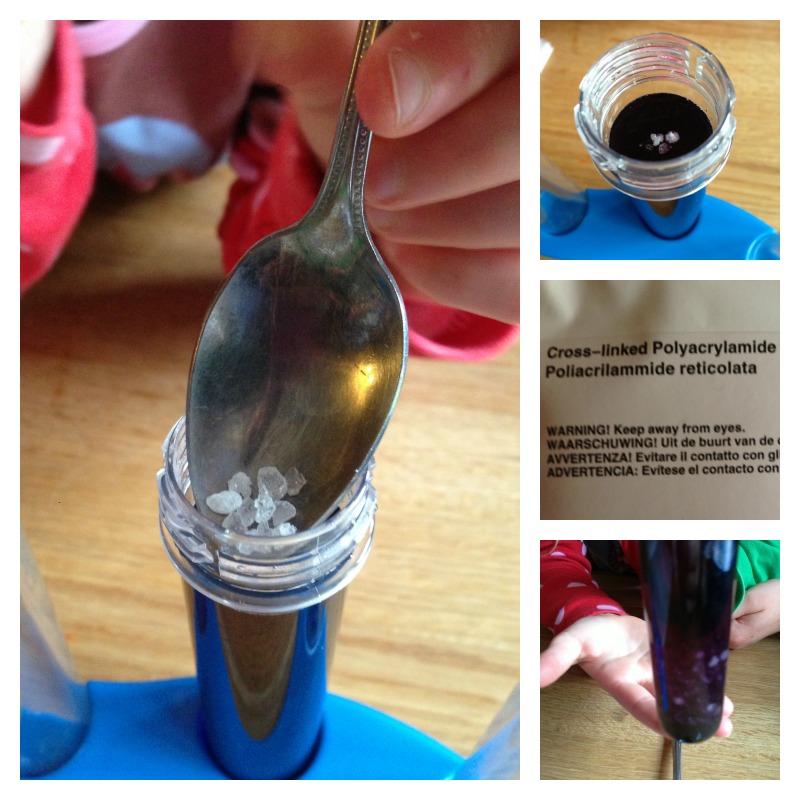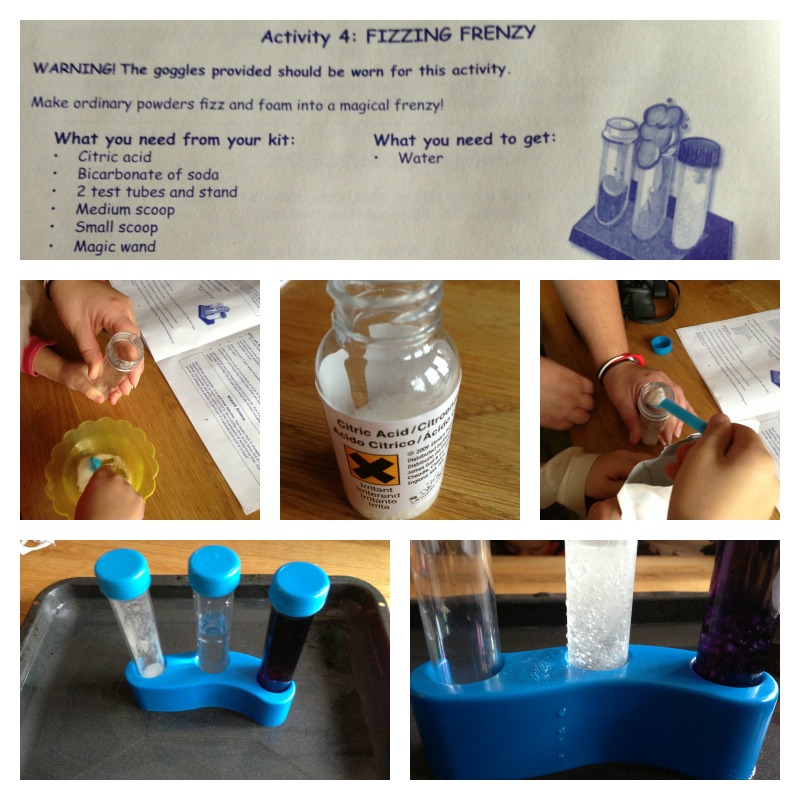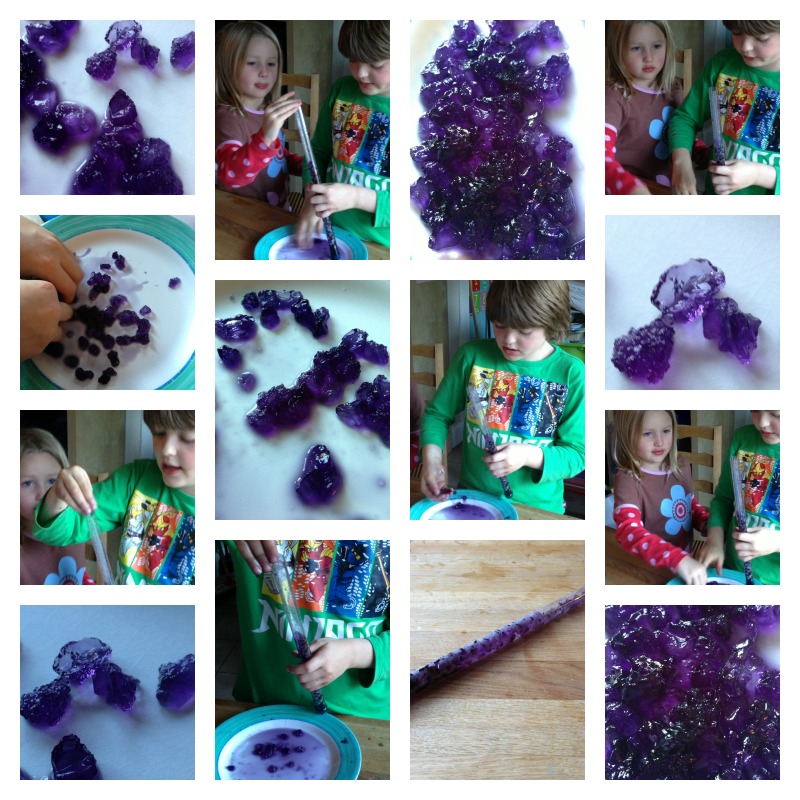On Tuesday afternoon our friends from 3 Kids and a Gluestick came to our house to test the Science kits we had been given at the Junior Scholars event on Saturday.
The kit we chose was Magic Science, because the children love pretending to do Magic shows, and any practical Science activities are always popular, so it was the perfect combination.
The full price of the kit is £12.99, and it is currently on sale on the Junior Scholars website for £11.99. The kit includes ten activities, so I think that is very good value for money.
The kit contains a detailed and informative leaflet, with advice for supervising adults, safety rules and information, a history of wizards and clear instructions for completing each of the activities. The history of wizards feels a bit random among the practical information, but it is quite good fun!
Once the safety goggles had been thoroughly tested and modelled by several of the children, we got started on making our shimmering purple magic wand!
First we dropped a blue colour tablet into a test tube of water, then we added a red colour tablet to make the water turn purple.
Next, we put in a teaspoon of polyacrylamide, and at that point we had to wait for an hour for the crystals to soak up all the purple water.
In the meantime, we started on another activity called Fizzing Frenzy. First we mixed citric acid and bicarbonate of soda in a test tube, and then we poured water in. As you can see from the video, the children were suitably impressed!
Later, when the purple crystals were ready we played with them for a bit and then used them to fill the wand tube.
We have had many Science kits over the years, and I would recommend this one as it is particularly good value for money. It has plenty of activities, a large number of items included and very clear instructions. There is also an explanation of the Science behind each activity. Thank you, Junior Scholars, it’s a great success!
We were given the kit for free by Junior Scholars. All opinions are our own.

